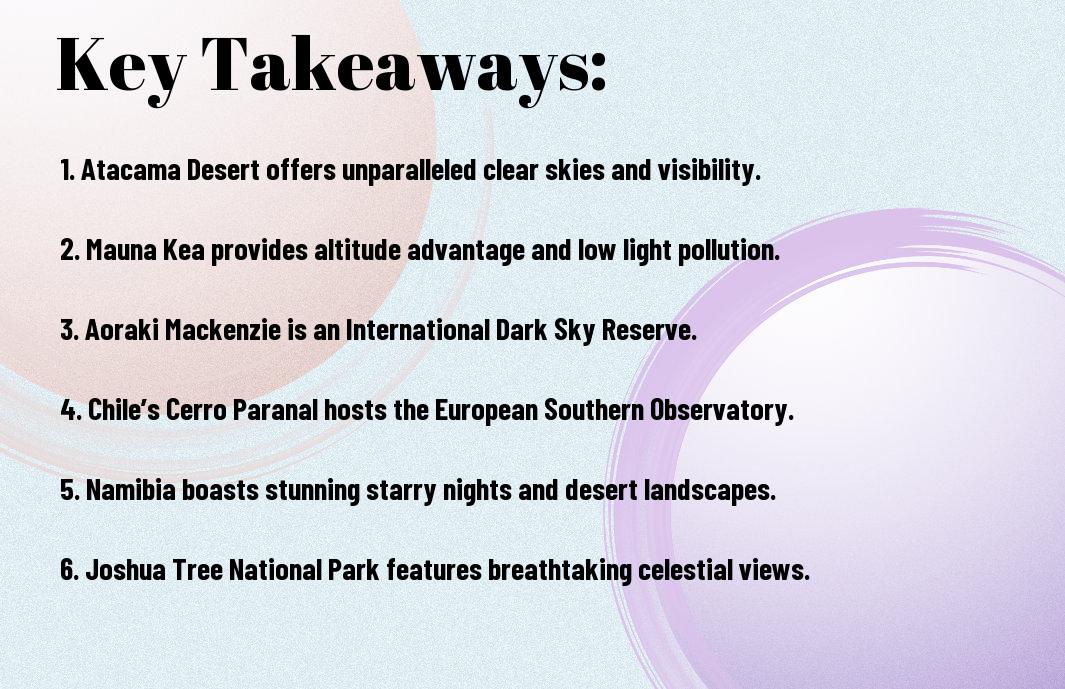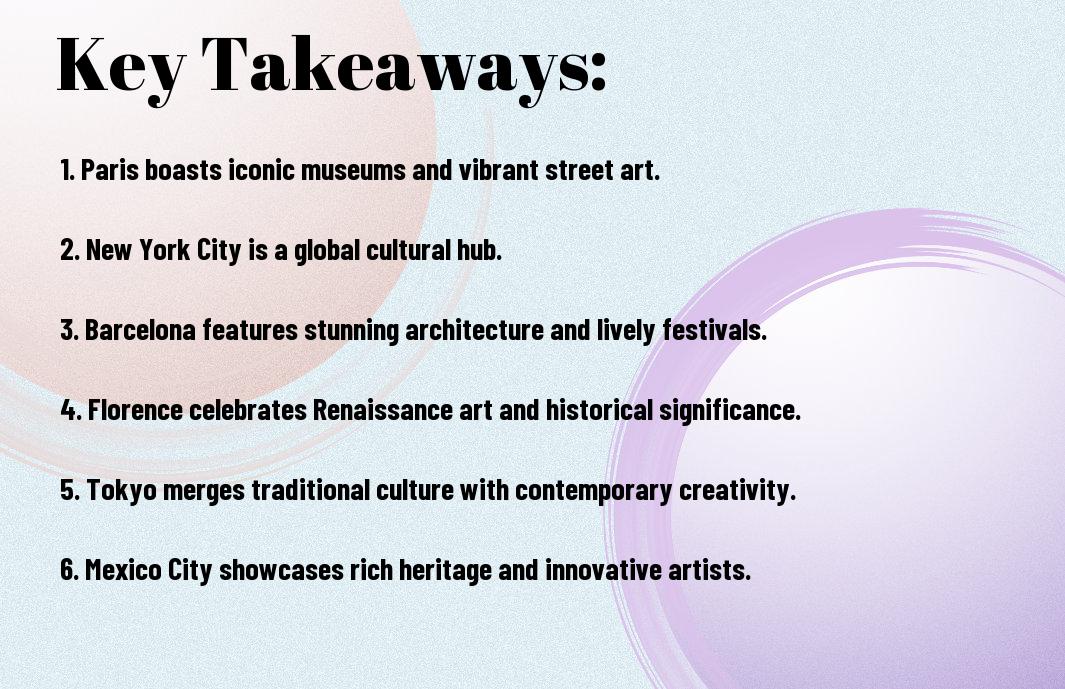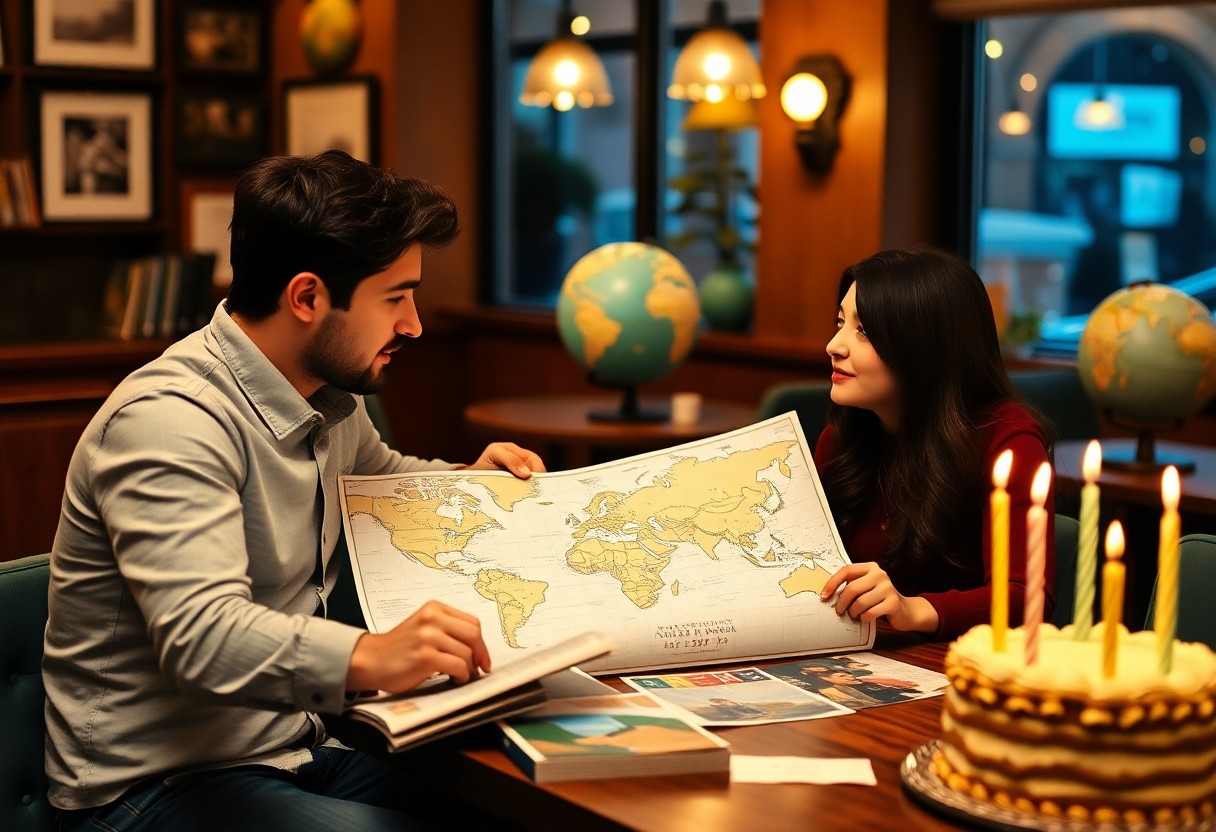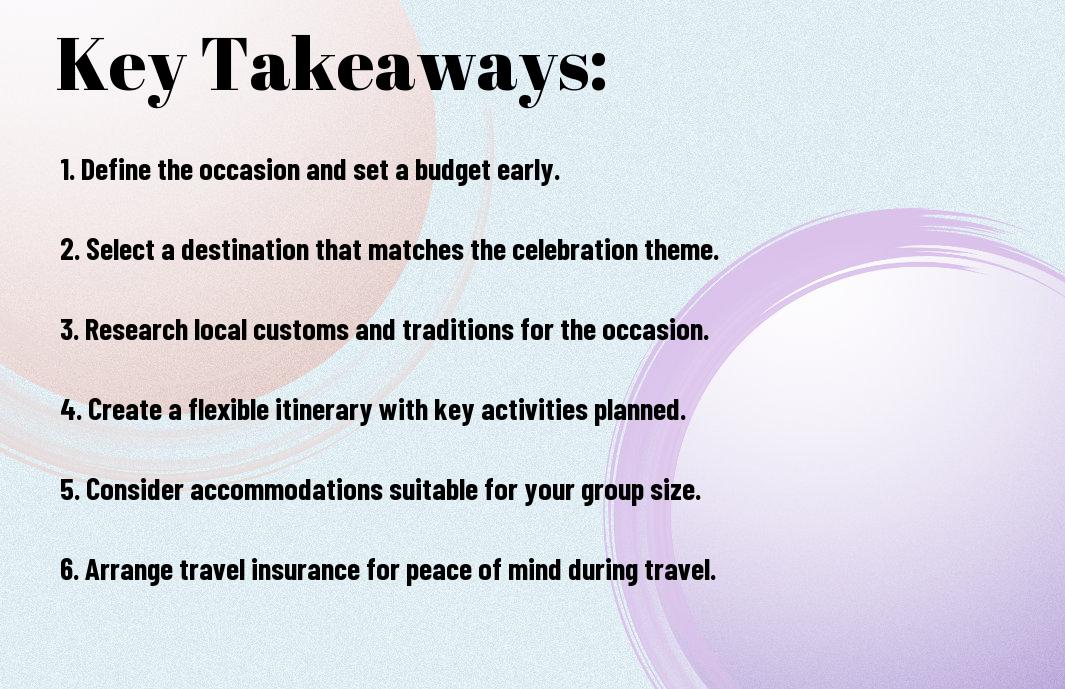Just imagine the thrill of exploring untouched landscapes and immersing yourself in the unique cultures of remote islands. If you’re eager to initiate on a journey far from the beaten path, this guide is designed for you. You’ll discover valuable tips on planning your visit, navigating transportation options, and respecting the natural beauty and traditions of these secluded destinations. Get ready to uncover the secrets of remote island travel and make the most of your adventurous spirit!
Key Takeaways:
- Research your destination thoroughly to understand the island’s accessibility, local culture, and environment.
- Pack vitals wisely, including appropriate gear, food supplies, and first-aid items for remote travel scenarios.
- Embrace flexibility in your itinerary; unexpected changes may lead to unique experiences and adventures on your trip.
Choosing the Right Remote Island
While the allure of remote islands can be intoxicating, selecting the right one requires consideration. You should contemplate factors such as your desired activities, local culture, and climate. Each island offers unique experiences; some may be ideal for relaxation, while others are suited for adventure. Take the time to evaluate what excites you most, helping ensure a fulfilling journey that aligns with your interests and expectations.
Researching Destinations
Researching various remote islands is imperative for making informed choices. Dive into travel blogs, social media, and tourism websites to gather insights about each destination. Look into your preferred activities, whether it’s hiking, snorkeling, or cultural exploration, to find an island that meets your expectations. Understanding the local customs and amenities will also enhance your experience.
Accessibility and Travel Logistics
To have a smooth trip, consider the accessibility of your chosen island. Investigate the available transportation options, including flights, ferries, or any potential road travel leading to ports. A sound understanding of how to reach your remote paradise can save you time and reduce stress during your journey.
Indeed, involving yourself in the logistics may require some extra effort but understanding travel routes, schedules, and costs is paramount for a seamless experience. Assess the frequency of transportation services, as some islands may have limited options, especially during off-peak times. It’s also wise to consider the duration of your stay versus travel time, ensuring you maximize your adventure. Being well-prepared in this regard will empower you to navigate any challenges that arise and truly enjoy the beauty of your selected island.
Preparing for Your Trip
It is crucial to plan ahead when visiting remote islands, as limited access to resources and services can make your adventure both exciting and challenging. Research your destination thoroughly, including the local culture, transportation options, accommodation, and any necessary permits. Create a flexible itinerary that accommodates unforeseen circumstances, such as weather changes or transportation delays, ensuring you get the most out of your experience while staying safe.
Essential Packing List
About your packing list, it should encompass both the crucials and any specific gear suitable for the activities you plan to engage in while on the islands. Include lightweight clothing, sturdy footwear, sunscreen, a first-aid kit, any necessary medications, a reusable water bottle, and snacks. Depending on the island, consider packing snorkeling gear, a portable charger, a waterproof bag, and a good quality camera to capture the stunning surroundings.
Health and Safety Considerations
Behind the excitement of exploring remote islands, you must prioritize your health and safety. Make sure you are up-to-date on any required vaccinations and research local health facilities to understand available medical services. Educate yourself about local wildlife and plant life to avoid potential hazards, and consider travel insurance that covers medical emergencies. Additionally, familiarize yourself with local emergency contacts and procedures.
A proactive approach to health and safety is important under the sometimes unpredictable conditions found in remote areas. Stay hydrated and ensure you have sufficient food supplies in case of unexpected delays. Protect yourself from the sun with appropriate clothing and sunscreen, and be mindful of local safety regulations, particularly regarding swimming, hiking, or wildlife interactions. Having a well-packed first-aid kit and knowing basic first aid can be invaluable in isolated areas—your awareness and preparedness can greatly enhance your island experience.
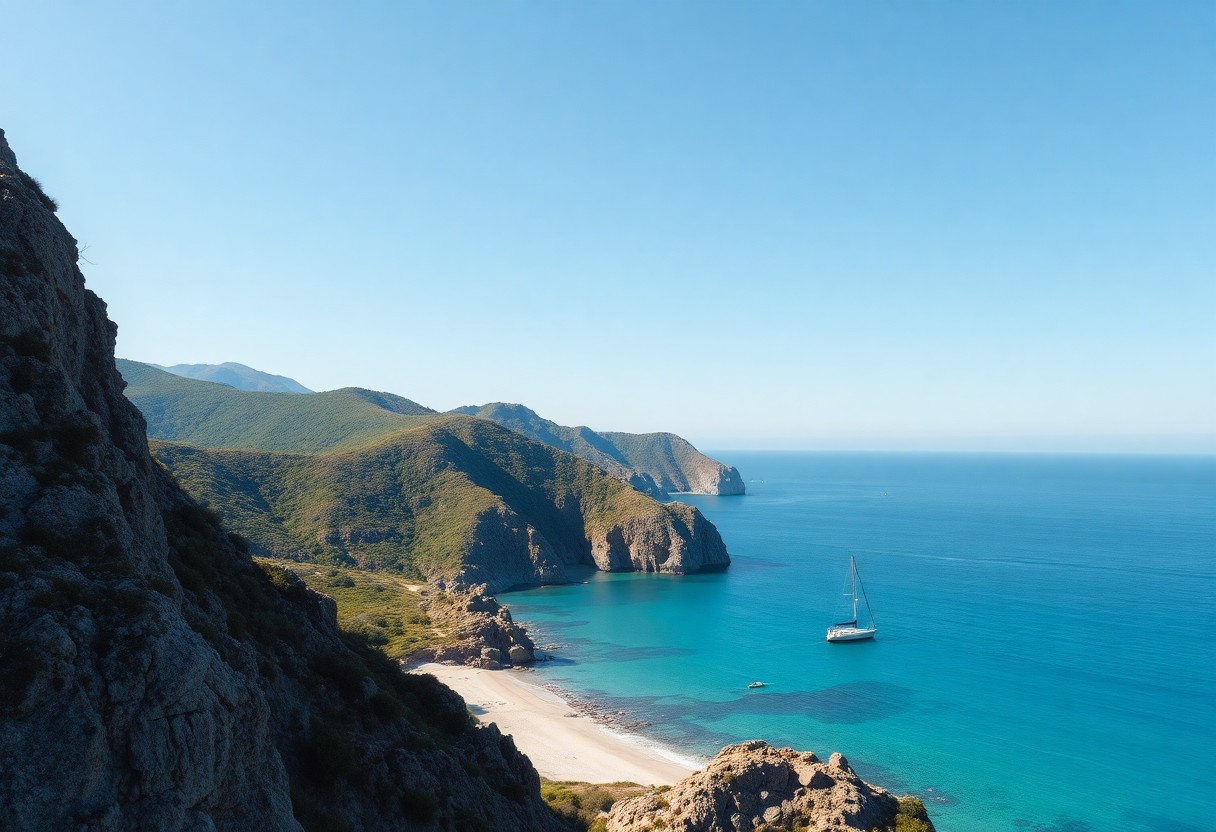
Navigating Local Cultures
Not all remote islands have the same cultural practices or customs, so it’s important for you to take the time to understand the local culture before your visit. Engaging with the community on their terms can enhance your travel experience and foster mutual respect. Be open-minded and willing to adapt your behavior to align with local expectations, which will provide a richer connection to the places you explore.
Understanding Cultural Norms
Below are some key cultural norms you should keep in mind when visiting remote islands:
- Dress modestly, especially in religious or traditional areas.
- Learn about local customs and rituals before participating.
- Be respectful when taking photos of locals or their property.
The locals will appreciate your efforts to show respect for their culture.
Language Tips for Travelers
Between the diverse dialects and languages found on remote islands, it’s beneficial to pick up a few imperative phrases. Learning the local language not only helps you communicate but also shows respect for the culture. Here are some helpful tips:
- Learn basic greetings and phrases in the local language.
- Use translation apps or pocket dictionaries if needed.
- Practice pronunciation with locals to build rapport.
The locals often welcome your attempts to speak their language.
The best way to navigate the language barrier is to embrace the learning process. Here are more tips to enhance your communication:
- Listen actively and encourage locals to teach you words or phrases.
- Use gestures or body language to convey your message.
- Be patient and open-minded if miscommunication occurs.
The experience will enrich your travel adventures on these remote islands.
Sustainable Travel Practices
To make the most of your trip to remote islands, prioritize sustainable travel practices to minimize your ecological footprint. By choosing eco-friendly accommodations and transportation methods, you contribute positively to the local environment. For more insights, check out Island Hopping: The Ultimate Adventure for the Modern Traveler.
Minimizing Environmental Impact
Above all, focus on leaving no trace. Use biodegradable products, reduce waste, and opt for reusable items. Participate in local conservation efforts to help maintain the natural beauty of the islands you visit. Your efforts can greatly influence the preservation of these fragile ecosystems.
Supporting Local Communities
Along with minimizing your impact, supporting local communities enriches your travel experience. Engage in cultural exchanges, purchase locally made handicrafts, and enjoy regional cuisine to help boost the local economy. This connection fosters mutual respect and understanding between you and the residents.
Even small choices you make can significantly impact local communities. By opting to stay in locally owned accommodations and dining at family-run restaurants, you contribute directly to the livelihoods of island residents. Engaging with local guides for tours allows you to gain valuable insights and deepen your appreciation of the culture, ensuring that your travel benefits those who call these islands home.
Activities and Adventures
After arriving on a remote island, immerse yourself in the range of activities that will elevate your experience. From snorkeling in crystal-clear waters to hiking rugged trails, these islands offer unique opportunities for adventure. Consider kayaking along picturesque coastlines or engaging in thrilling water sports. As you explore, don’t forget to soak in the stunning sunsets or participate in local festivals, adding a rich layer to your journey.
Exploring Nature and Wildlife
Behind every remote island lies a treasure trove of flora and fauna waiting to be discovered. You can hike through lush rainforests, observe endemic species, and marvel at the diverse marine life. Look out for guided tours that enhance your understanding of the natural ecosystem, ensuring you appreciate the beauty surrounding you.
Engaging in Local Experiences
An necessary part of visiting a remote island is engaging with the local culture. Dive into community activities, whether it’s cooking traditional dishes or attending local markets. This involvement not only supports the economy but also enriches your travel experience, offering authentic insights into the islanders’ way of life.
Adventures in engaging with local experiences can transform your visit and create lasting memories. Join workshops, participate in festivals, or volunteer with community projects to connect with residents. You’ll gain a deeper appreciation for their customs, stories, and traditions, enriching your understanding of the island’s heritage and making your adventure truly immersive.
Challenges of Remote Island Travel
Keep in mind that visiting remote islands can present unique challenges that require preparation and adaptability. You may encounter limited transportation options, unpredictable weather conditions, and basic accommodation amenities. Additionally, maintaining communication with the outside world may prove difficult, so it’s crucial to stay flexible and have contingency plans in place for your adventure.
Dealing with Limited Resources
After defining your itinerary, you should consider the limited resources that most remote islands have to offer. From generating your own power to ensuring you have enough food and water, it’s important to plan ahead. Bring crucial supplies, and research local stores or markets where you might find additional provisions, so you can manage your needs effectively while exploring.
Handling Unexpected Situations
Handling unexpected situations is part of the adventure when traveling to remote islands. You may face sudden changes in weather, transportation issues, or medical emergencies. Learning to stay calm and find solutions is key. Carry crucial contact information and have a basic understanding of local customs and resources. This preparedness will help you navigate challenges with confidence.
Dealing with unexpected situations can enhance your travel experience once you embrace the unpredictability of island life. Always have a first-aid kit and emergency supplies on hand, and consider taking a basic survival course. Learning some local language phrases can also facilitate communication and help you connect with the island’s residents, gaining valuable insights and assistance in difficult moments.

Conclusion
Drawing together the insights provided, visiting remote islands offers an unforgettable adventure filled with natural beauty and unique cultures. To ensure a smooth experience, plan your travel meticulously by researching destinations, securing necessary permits, and packing wisely. Engaging with local communities and respecting their customs will enrich your journey. Use the tips shared to navigate logistics, choose the right travel gear, and maintain a flexible mindset. With preparation and an adventurous spirit, you can create lasting memories on your remote island escapade.
Q: What are the best types of transportation to reach remote islands?
A: To access remote islands, travelers often have various transportation options depending on the island’s location and accessibility. Common modes include ferries, which are ideal for islands close to the mainland; small charter flights that can land on smaller airstrips; and boats or yachts for more secluded areas. For some islands, guided tours may offer boat transport as part of an adventure package. It is advisable to research transportation schedules in advance to ensure a smooth journey.
Q: What crucials should I pack for a trip to remote islands?
A: Packing for remote islands requires thoughtful consideration to ensure comfort and safety. Essentials include sunscreen, insect repellent, and a first-aid kit. Lightweight, quick-drying clothing and sturdy footwear are important for physical activities like hiking or beach exploration. If you plan to snorkel or dive, bringing your own gear might save time and money at remote locations. Additionally, a reusable water bottle and non-perishable snacks can be useful, as amenities might be limited on some islands.
Q: How can I respect the local culture when visiting remote islands?
A: Understanding and respecting local culture is key to enjoying your visit to remote islands. Start by researching the traditions, customs, and beliefs of the island inhabitants before your trip. Engage with locals politely, seeking opportunities to learn from them and their way of life, which may include participating in community activities or trying local cuisine. It’s vital to respect local dress codes, especially in sacred places, and adhere to any guidelines provided by the community to ensure a positive interaction.

